 |
 |
 |
 |
 |
 |
| |
 |
|
 |
 |
 |
  |
  |
 |
 |
 |
 |
|
|
 |
|
 |
 |
 |
BUILDING |
 |
|
 |
|
 |
 |
 |
| |
 |
| 
 |
Pavillon Le Corbusier
Heidi Weber Haus [Maison de l'homme] |
|
 |
 |
 |
 |
DESIGNER |
 |
|
|
 |
|
 |
 |
 |
| |
 |
|
 |
 |
 |
 |
CONTEXT |
 |
|
|
 |
|
 |
 |
 |
| Location |
 |
|
 |
|
 |
 |
 |
|
 |
|
| Relationship with the location |
 |
|
 |
|
 |
 |
 |
 |
 |
 |
 |
DESCRIPTION |
 |
|
|
 |
|
 |
 |
 |
| 11 May 2019 |
 |
|
 |
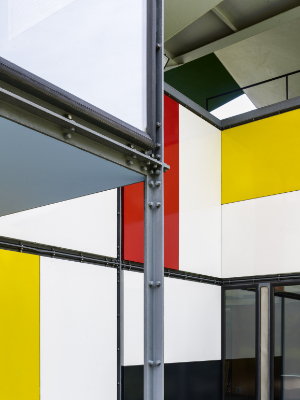 The newly renovated Pavillon Le Corbusier in Zurich reopen its doors to the public. Le Corbusier’s last building is a colorful architectural masterpiece that is run as a public museum.
Originally opened in 1967, the Pavillon Le Corbusier was used as an exhibition venue for presenting Le Corbusier’s work and ideas to a wide audience. In keeping with this spirit, the pavilion is now open as a public museum operated by the Museum für Gestaltung Zürich on behalf of the owner, the City of Zurich. |
|
 |
 |
 |
|
 |
|
| History |
 |
|
 |
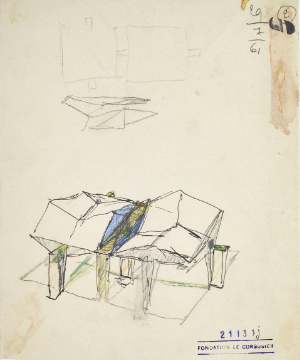 The Pavillon Le Corbusier came about thanks to the initiative and great dedication of the interior designer, gallery owner, and patron Heidi Weber. She won over Le Corbusier for the project, obtained building rights for fifty years for the land on the Blatterwiese meadow from the City of Zurich, and drove forward the construction with patience and perseverance despite many difficulties. Work on the building began in 1964, but came to a stop with Le Corbusier’s death in August 1965. Afterwards, a new project team had to be put together to successfully complete the building.
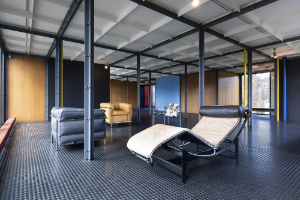 The pavilion was inaugurated in 1967 as the last design by Le Corbusier. When the lease on the land expired, ownership passed to the City of Zurich in 2014. Eva Wagner was hired to manage the museum for four years, after which the pavilion was extensively renovated and repaired from October 2017 to February 2019. For this purpose, the architects Silvio Schmed and Arthur Rüegg meticulously analyzed the landmarked building in order to restore it with consummate expertise and great attention to detail. Today, the Pavillon Le Corbusier shines forth again with the same freshness, elegance, and bright colors as when it was first built. |
|
 |
 |
 |
|
 |
|
| The Main Exhibit: The Pavilion Itself |
 |
|
 |
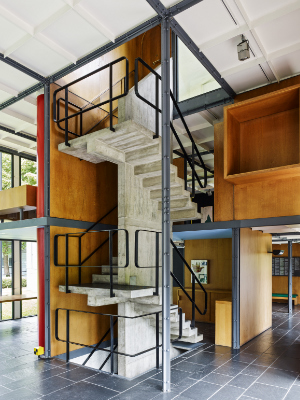 Le Corbusier designed the pavilion with the goal of building the ideal exhibition venue. Art, architecture, and the life infusing them were to be merged in a new symbiosis. With this exhibition space in the form of a pavilion, Le Corbusier thus realized his vision of a “synthesis of the arts.” Numerous sketches and plans attest to a prolonged development period that began in the mid- 1950s.
The ship-like construction is based on Le Corbusier’s Modulor system of proportions, and the building embodies a number of his other design principles as well-as a kind of architectural legacy. These tenets include prefabrication, elements such as the access ramp and the small roof garden that recur throughout his oeuvre, and the “promenade architecturale,” a carefully conceived route through the building to enable the visitor to optimally view and experience the architecture. The structure is the last completed design by the influential architect and his only building made of steel and glass. The colorful pavilion with its filigree look is renowned worldwide as an architectural gem and gives Zurich a new cultural and tourist highlight as a walk-through work of art.
Visitors can wander through the rooms and discover the pavilion at their own pace. Across some 600 square meters and four stories, the pavilion offers various perspectives and vantage points. Le Corbusier’s furniture, some of it permanently installed, is spread throughout the pavilion, demonstrating its second designation as a residence and inviting visitors to linger. Even the small roof terrace is now open to the public, affording unobstructed views of the Zürichhorn river delta and the lake. |
|
 |
 |
 |
|
 |
|
| . |
 |
|
 |
|
 |
 |
 |
|
 |
|
| Museum Operations |
 |
|
 |
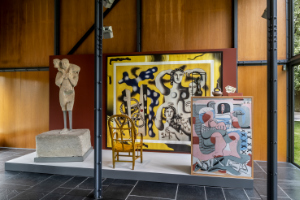 A new temporary exhibition is to be presented each year showcasing the various facets of Le Corbusier’s oeuvre. The Swiss-French architect, architectural theorist, and urban planner was also active as a painter, draftsman, sculptor, and furniture designer, and left behind a highly diverse and extremely influential body of work. A varied educational program with guided tours, exhibition talks, and workshops, as well as a series of performances and concerts developed especially for the pavilion, will make it an even more attractive destination for repeated visits. A new temporary exhibition is to be presented each year showcasing the various facets of Le Corbusier’s oeuvre. The Swiss-French architect, architectural theorist, and urban planner was also active as a painter, draftsman, sculptor, and furniture designer, and left behind a highly diverse and extremely influential body of work. A varied educational program with guided tours, exhibition talks, and workshops, as well as a series of performances and concerts developed especially for the pavilion, will make it an even more attractive destination for repeated visits. |
|
 |
 |
 |
 |
 |
 |
 |
VIDEO |
 |
|
|
 |
|
 |
 |
 |
| |
 |
|
 |
 |
 |
 |
MATERIALS |
 |
|
|
 |
|
 |
 |
 |
 |
 |
|
 |
 |
 |
 |
LOCATION |
 |
|
|
 |
|
 |
 |
 |

|
 |

|
Continent |
|
 |
  Europe |
|
Nation |
|
 |
  Switzerland [Schweiz/Suisse] |
|
Canton |
|
 |
  Zürich |
|
District |
|
 |
  Zürich |
|
Town |
|
 |
  Zürich |
|
Neighborhoods |
|
 |
  08 Riesbach |
|
Address |
|
 |
  Höschgasse 8 (Bellerive Strasse)
|
|
|
|
 |
|
Telephone |
|
 |
|
Website |
|
 |
|
E-mail |
|
 |
welcome@pavillon-le-corbusier.ch |
|
 |
 |
 |
 |
MAP |
 |
|
|
 |
|
 |
 |
 |
| |
 |
|
 |
 |
 |
 |
|
TYPOLOGY |
 |
|
|
 |
|
 |
 |
 |
|
|
 |
ARCHITECTURE | Buildings for cultural activities
Art galleries and exhibition areas
Museums and buildings for exhibitions
Architectural and design museums
Historic house museums
| |
 |
 |
 |
 |
CHRONOLOGY |
 |
|
|
 |
|
 |
 |
 |
Project |
 |
|
 |
| 
 |
1960 - 1962
|
|
Realisation |
 |
|
 |
| 
 |
1965 - 1967 |
|
 |
 |
 |
 |
AWARDS |
 |
|
|
 |
|
 |
 |
 |
| 2009 |
 |
|
 |

Schweizerisches Inventar der Kulturgüter von nationaler und regionaler Bedeutung
[Swiss Inventory of Cultural Property of National and Regional Significance]
A-Objekte
[class A - national significance] |
|
 |
 |
 |
 |
 |
 |
 |
BIBILIOGRAPHIC REFERENCES |
 |
|
|
 |
|
 |
 |
 |
|
 |
| Catherine Dumont d'Ayot, Tim Benton, Le Corbusier's pavilion for Zurich. Model and prototype of an ideal exhibition space, Lars Muller, Zürich 2013 |
|
|
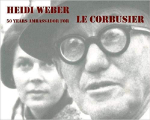 Heidi Weber, 50 Years Ambassador for Le Corbusier 1958–2008, Birkhäuser, Basel 2009 Heidi Weber, 50 Years Ambassador for Le Corbusier 1958–2008, Birkhäuser, Basel 2009 |
|
|
Luigi Spinelli, "Domus Archives", Domus 913, aprile/april 2008, p. 39
Luigi Spinelli, "Heidi Weber. Centre Le Corbusier Zurich", Domus 913, aprile/april 2008, pp. 88-93 |
|
|
| Mercedes Daguerre, Birkhäuser Architectural Guide Switzerland 20th Century, Birkhäuser, Basel 1997, pp. 74-75 |
|
|
| Abitare 206 [Helvetia], luglio-agosto/july-august 1982, p. 90 |
|
|
| "Le Corbusier Centre, Zurichhorn, Zurich", Domus 455, ottobre/october 1967, pp. 1-12, 791-798 |
|
 |
 |
 |
 |
 |
 |
 |
EXHIBITIONS |
 |
|
|
 |
|
 |
 |
 |
| |
 |
| Le Corbusier. Museo y colección Heidi Weber, Madrid, Museo Nacional Centro de Arte Reina Sofía, 5 june/3 september 2007 |
|
 |
 |
 |
 |
 |
 |
 |
ADDITIONS AND DIGRESSIONS |
 |
|
|
 |
|
 |
 |
 |
| |
 |
| Photographs by René Burri |
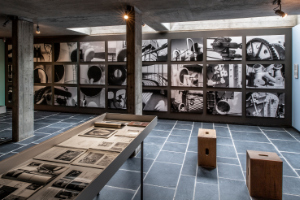 On the upper level (in the small library) is a permanent exhibition of seventeen photographs taken by René Burri (1933-2016) in his role as visual chronicler of Le Corbusier and his work between 1955 and 1965. On the upper level (in the small library) is a permanent exhibition of seventeen photographs taken by René Burri (1933-2016) in his role as visual chronicler of Le Corbusier and his work between 1955 and 1965. |
|
 |
 |
 |
 |
 |
 |
 |
CLIENT |
 |
|
|
 |
|
 |
 |
 |
| |
 |
|
 |
 |
 |
 |
STRUCTURES |
 |
|
|
 |
|
 |
 |
 |
| |
 |
Louis Fruitet
Rene Bollinger
Jean Prouvé |
|
 |
 |
 |
 |
STAFF |
 |
|
|
 |
|
 |
 |
 |
Project  |
 |
|
|
 |
|
|
 |
|
Project management |
 |
| Alain Taves, Robert Rebutato |
|
Construction management |
 |
|
Construction supervision |
 |
|
Consultant |
 |
|
Structural consultant |
 |
M. Fruitet, Conseil de Paris [steel structures]
Rene Bollinger [concrete structures]
Jean Prouvé [façade studies]
AG Heinr Hatt-Haller [concrete foundations] |
|
Renovation plan |
 |
| Silvio Schmed, Arthur Rüegg [2017-2019] |
|
 |
 |
 |
 |
ANNOTATIONS |
 |
|
|
 |
|
 |
 |
 |
| |
 |
The building was built after the death of Le Corbusier based on drawings made by the architect just before he died.
Restored in 2017-2019.
|
|
 |
 |
 |
 |
CREDITS |
 |
|
|
 |
|
 |
 |
 |
| |
 |
Photos © ZHdK, Georg Aerni, Pascal Meier
Drawings © Fondation Le Corbusier
Text edited by Pavillon Le Corbusier
Courtesy of Pavillon Le Corbusier | Museum für Gestaltung Zürich
|
|
 |
  |
 |
|
|